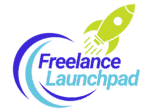Let’s Cut to the Chase – Your proposal isn’t about you—it’s about solving the client’s problems. Skip the generic templates, ditch the sob stories, and focus on demonstrating that you understand their specific needs and can deliver measurable results. Great proposals get sent within 48 hours, address the client by name, and position your services as an investment, not a cost.

Your resume got you noticed. Your portfolio impressed them. But it’s your proposal that seals the deal—or kills it completely.
Here’s the brutal truth: 85% of freelancers have bad writing skills – Approximately 190 bid proposals were poorly written and contained bad grammar. 7 out of 10 freelancers didn’t bother to read the full description. While your competition is shooting themselves in the foot with lazy, generic pitches, you’re about to learn the insider secrets that separate six-figure freelancers from the rest.
With the average RFP (Request for Proposals) win rate across all industries at 45% and over 99% of companies planning to hire freelancers in 2025, the opportunities are massive. But only if you know how to write proposals that actually work.

“Don’t find customers for your products, find products for your customers”.
– Seth Godin
The Psychology Behind Winning Proposals
Before we dive into tactics, you need to understand what’s happening in your client’s mind when they open your proposal. They’re not just evaluating your skills—they’re making an emotional decision about trust, competence, and whether you “get” them.
The Client’s Three Invisible Questions
Your proposal must answer 3 “invisible questions” – Share information (and work samples or portfolio pieces) that makes your client confident the answer to these three questions is “yes!”
- “Can you actually do this work?” (Competence)
- “Will you understand my business and goals?” (Relevance)
- “Can I trust you to deliver on time and on budget?” (Reliability)
Every element of your proposal should address at least one of these concerns. Miss any of them, and you’re out.
The Two-Minute Rule
In general, the shorter and more straight-to-the-point your proposal is, the more likely you’ll be to close the deal. Clients don’t have time for your life story. They want to know quickly whether you’re the solution to their problem.
Think of your proposal like a movie trailer—it should give them enough compelling information to want the full experience (working with you) without spoiling the plot.

Study the job posting obsessively: Take the time to read the project description and identify the client’s needs, objectives, and expectations
Step 1: Research Like a Detective
The biggest mistake: Many freelancers didn’t take the time to learn about the client and personalize their email. Roshan used an alias for posting the jobs, “Mike Ford,” which was clearly visible in both the username and the client profile.
Before You Write a Single Word
- Study the job posting obsessively: Take the time to read the project description and identify the client’s needs, objectives, and expectations. This understanding will enable you to tailor your proposal to address their specific needs, increasing your chances of success.
- Research the client’s business: Visit their website, check their social media, understand their industry challenges. What keeps them awake at night?
- Look for hidden clues: Job postings often contain specific requests that test whether you’re paying attention. Miss these, and you’re immediately disqualified.
- Check their hiring history: On platforms like Upwork, you can see what they’ve paid others and how they communicate. This is gold for tailoring your approach.
The Personalization Advantage
When submitting a proposal on UpWork, don’t just write the same thing for everyone and simply change their company name. That’s a great way to get your proposal instantly rejected. Instead, take some time to tailor your proposal to the client’s specific needs. Doing so will help you stand out from the crowd when clients begin to review candidates.
Generic proposals scream “I don’t care about your specific problem.” Personalized proposals whisper “I see you, I understand you, and I’m here to help.”
Step 2: Craft an Irresistible Opening
Your opening line is make-or-break. It determines whether they read further or move to the next proposal in their inbox.
Hook Strategies That Work
The Problem Recognition Hook: “I noticed your current website is losing potential customers at the checkout page—a 67% cart abandonment rate according to your Google Analytics screenshot.”
The Insight Hook: “Most SaaS companies your size struggle with user onboarding, but the real problem isn’t the software—it’s the story you’re telling new users.”
The Quick Win Hook: Rather than using a standard subject line of ‘Proposal for [Company]’ go for something striking like ‘My 7 Blog Ideas to Increase Engagement for [Company]’. This will immediately pique the client’s interest.
What NOT to Lead With
❌ The Sob Story: I am a very hard worker who’s in serious need of a job. I’ve been going through some difficult times and I am willing to do anything to get this position. I am willing to offer a cheaper price for my services and I would be extremely grateful if you could hire me.
❌ The Generic Greeting: “I hope this message finds you well…”
❌ The Resume Dump: “I have 5 years of experience in…”
Step 3: Demonstrate Understanding (Not Just Skills)
This is where most freelancers fail. They focus on what they can do instead of what the client needs.
The Problem-Solution Framework
Start with their problem: The problem statement is one of the most important elements in any freelance… proposal. Forgetting to include one (or including one anywhere besides the beginning of your proposals) makes your proposal look like all the other boring ones flooding your clients’ inboxes.
Example: “Your e-commerce conversion rate is stuck at 1.2%, which means you’re leaving approximately $50,000 in monthly revenue on the table. The issue isn’t traffic—you’re getting plenty of visitors. The problem is your product pages aren’t convincing browsers to become buyers.”
Then present your solution: “I’ll redesign your product pages using conversion psychology principles that have increased sales by an average of 34% for my e-commerce clients. This includes social proof positioning, scarcity triggers, and mobile-optimized checkout flows.”
Show, Don’t Just Tell
The simplest way to prove to a prospective client that you can succeed is by showing them an example of something similar you’ve already done. Point out a few of your past experiences in your portfolio or Upwork profile that match their project needs.
Instead of: “I’m great at social media marketing.” Try: “I increased Instagram engagement by 340% for a boutique fitness studio by implementing a user-generated content strategy similar to what would work for your brand.”
To me, job titles don’t matter. Everyone is in sales. It’s the only way we stay in business.
Harvey Mackay



Step 4: Present Your Approach Strategically
The Roadmap Method
Clients want to see that you’ve thought through their project, not just that you’re capable of doing the work.
Name the steps you plan to do in order to accomplish the job. Better yet, combine that with a timeline. It can be quite difficult to determine how long you need for each particular step but try it anyway. This will convince a client that you have thought carefully about the project and how exactly it can be done.
Example for a website redesign: “Week 1: User experience audit and competitor analysis Week 2: Wireframe development and client feedback Week 3-4: Design implementation and responsive testing Week 5: Launch, training, and optimization”
Address Potential Concerns
Think about what keeps your client up at night. Then, tackle it head-on: “Worried about data security? I use full disk encryption and strict confidentiality protocols.”
Common client fears:
- Will this freelancer disappear mid-project?
- Are they technically competent?
- Will they understand our industry?
- Can they work within our timeline and budget?
Address these proactively in your proposal.
Step 5: Use Data and Specifics to Build Credibility
Vague promises kill deals. Specific, measurable outcomes win them.
The Power of Numbers
Numbers pack a punch in freelance proposals. They show clients exactly what you can do.
Instead of: “I’ll improve your SEO.” Try: “I’ll target 15 high-converting keywords that your competitors are ranking for but you’re not, potentially driving an additional 2,000 qualified visitors monthly.”
Industry-Specific Value Props
Companies save $11.6 per hour on average by hiring freelancers instead of full-timers. Point this out to budget-conscious clients.
Tailor your value proposition to their industry:
- E-commerce: “Conversion rate optimization”
- SaaS: “User acquisition cost reduction”
- Local businesses: “Local search visibility improvement”
Step 6: Price Strategically (It’s Psychology, Not Math)
Use Investment Language
When you’re building out the pricing/cost section of your proposal, instead use the term “Investment,” there and you’ll be completely shifting the focus of what your services are doing for the client. You’ll elicit a much different psychological response in the mind of your client, with this approach. An investment suggests that their resources are going toward creating results that will deliver a return to their business, where as “pricing” or “cost” simply implies money spent – void of any tangible returns.

The Pricing Structure That Wins
Instead of: “My rate is $50/hour for approximately 20 hours.” Try: “Investment: $2,500 for complete website redesign including mobile optimization, SEO setup, and two rounds of revisions. ROI: Based on your current traffic, this could generate an additional $8,000-12,000 in monthly revenue.”
Avoid the Cheap Trap
Amateur freelancers think all clients are attracted to low prices. Professionals know that high quality clients want high quality work, and they’re willing to pay you well to do it.
Quality clients understand that cheap work is expensive work. Don’t compete on price—compete on value.
Step 7: Close With Confidence
The Confident Close Template
“I’m excited about the opportunity to help [Company] achieve [specific goal]. I can start immediately and deliver the completed [deliverable] by [specific date].
I’ve attached [relevant work sample] that demonstrates my approach to similar challenges.
When would be a good time for a brief call to discuss the project details?”
Include Clear Next Steps Next desired actions – Remember your proposal is a sales document so include a strong call-to-action at the end. Also include your contact information, payment information, an expiration date for your proposal (after which a new proposal must be solicited), and anything else your potential client needs to move forward.
Know how to Showcase Your Work for your Portfolio?
The Power of a Portfolio: How to Showcase Your Work
The 7 Deadly Proposal Sins (And How to Avoid Them)
Sin #1: The Copy-Paste Crime
Most of the freelancers are trying to “save time” by sending out the same cover letter in each proposal over and over again. Good clients can spot canned proposals a mile away.
Fix: Create template sections, but always customize the problem statement, solution, and examples for each client.
Sin #2: The Autobiography Approach
A “we” proposal is a common slip up in proposal writing. More than the company’s history and other accomplishments, prospects want to know how the product or service is going to cater to their needs.
Fix: Follow the 80/20 rule—80% about them and their problems, 20% about you and your solutions.
Sin #3: The Feature Laundry List
Don’t list what you do—explain what it means for them.
Wrong: “I provide SEO services, content marketing, and social media management.” Right: “I’ll increase your organic search visibility to drive qualified leads who are actively searching for your services.”
Sin #4: The Pricing Apology
Many times I have seen freelancers bid cheap prices OR bargain deals. As a freelancer asking to work on the job at $10 per hour even though the clients profile clearly shows past record of $30 per hour paid. That means you are negotiating to $10/hr even though your potential client is ready to pay $30/hr.
Fix: Price confidently and justify your rates with value, not desperation.
Sin #5: The Novel-Length Proposal
It is not necessary for your freelance proposal to be extensive, as long as it proves that you understand the issue and that you are capable of solving it. Always strive to write in a clear, succinct, and brief manner. Everything you require may usually be communicated in three brief paragraphs with 2-3 lines each.
Fix: Aim for 300-500 words maximum. If you need more space, you’re probably overexplaining.
Sin #6: The Grammar Disaster
Poor grammar and spelling can undermine your professionalism and credibility as a freelancer. By paying close attention to these details and implementing these tips, you can ensure that your Upwork proposals are polished and error-free, leaving a positive impression on clients.
Fix: Use tools like Grammarly, but more importantly, read your proposal aloud before sending.
Sin #7: The Speed Killer
A Bidsketch survey found that winning freelance proposals get to their clients on average, 26% faster than losing proposals. In fact, the average winning proposal made it to the client in 2.7 days, compared to the average losing proposal which took 3.4 days to arrive.
Fix: Aim to submit within 24-48 hours. Speed signals enthusiasm and professionalism.
Advanced Proposal Strategies
The Content Audit Opener
For content-related projects, actually review their existing content and point out specific improvements.
“I noticed your blog hasn’t been updated since March, and your most popular post has only 47 shares. I’d focus on creating SEO-optimized content that builds on your existing traffic patterns while filling the gaps in your content calendar.”
The Free Insight Strategy
You don’t necessarily have to give a discount on your services, but freebies or in-kind offers are often used as part of a proposal to make you a more attractive candidate to the client initially.
Offer a small, valuable freebie that demonstrates your expertise:
- “I’ll include a competitive analysis report at no charge”
- “Free setup of Google Analytics tracking for your campaign”
- “Bonus: Three social media templates you can use beyond this project”
The Case Study Close
End with a brief success story that mirrors their situation:
“I recently helped a similar B2B company increase their qualified leads by 67% using the same strategy I’ve outlined above. Their CEO told me it was the best marketing investment they’d made in five years.”
Either you run the day, or the day runs you.
Jim Rohn
Platform-Specific Tips
Upwork Optimization
In 2025, your proposal needs to impress AI screening tools and human readers. Here’s how: Use industry-specific keywords throughout your proposal. If you’re a web developer, include terms like “responsive design”, “UI/UX”, and “cross-browser compatibility.”
- Use relevant keywords naturally throughout your proposal
- Break content into scannable sections with headers
- Include specific numbers and metrics
- Proofread meticulously—AI flags grammar errors
Freelancer.com Strategy
Focus on detailed project breakdown and timeline since clients on this platform often prefer fixed-price projects.
Direct Client Outreach
When reaching out directly (not through platforms), your proposal can be longer and more relationship-focused since you’re not competing against dozens of others in the same inbox.
The Follow-Up Formula
Your proposal isn’t a one-and-done activity. Strategic follow-up can revive dead leads.
The Follow-Up Timeline
- Day 3: Gentle check-in with additional value
- Day 7: Share a relevant industry insight or article
- Day 14: Final follow-up with alternative options
Follow-Up Script
“Hi [Name], I wanted to follow up on the proposal I sent last week for [project]. I just came across this case study about [relevant topic] that reminded me of your situation. [Link/insight].
If the original scope doesn’t fit your current needs, I’m happy to discuss alternative approaches. What matters most is helping you achieve [their goal].”
Measuring and Improving Your Proposal Success
Track These Metrics
- Response rate: Aim for 30-50% response rate
- Conversion rate: Target 20-30% proposal-to-project conversion
- Time to response: Faster is almost always better
A/B Testing Your Proposals
Try different approaches for similar projects:
- Problem-focused vs. solution-focused openings
- Short vs. medium-length proposals
- Different pricing presentations
- Various closing strategies
The Feedback Loop
When clients say no, ask why. Their feedback is worth its weight in gold for improving your next proposal.
From Proposal to Project: What Happens Next
The Acceptance Process
When your proposal gets accepted:
- Confirm scope immediately: Restate exactly what you’ll deliver
- Set communication expectations: How often will you update them?
- Establish payment terms: When and how you’ll be paid
- Start with enthusiasm: Thank them and reconfirm your excitement
Building Long-Term Relationships
The top 10% also secured engagements that were 288% longer than the norm. Great freelancers don’t just win single projects—they build ongoing relationships that generate more work with less pitching.
The Proposal Mastery Mindset
Quality Over Quantity
The most successful freelancers I know don’t spend a lot of time writing cover letters and answering screening questions. In fact, they usually spend less time putting Upwork proposals together than their less successful competitors! But when you compare the QUALITY of their proposals, the difference is like night and day.
Stop spraying and start sniping. Better to send 5 highly targeted, customized proposals than 20 generic ones.
Think Like a Business Consultant
Approach each proposal as if you’re a high-paid consultant brought in to solve a specific business problem. What would that consultant focus on? Problems, solutions, ROI, and risk mitigation.
Confidence Is Contagious
Balance is key: Write like you’re in a friendly chat but showcase your expertise. My tip: Smile while writing. It helps maintain a positive tone throughout the message and communicates those positive vibes to the reader.
Clients want to work with freelancers who are confident in their abilities. That confidence should permeate every aspect of your proposal.
Your 30-Day Proposal Improvement Plan
Week 1: Foundation
- Audit your last 10 proposals for common mistakes
- Create research templates for quick client analysis
- Develop 3-5 hook formulas for different project types
Week 2: Templates
- Build modular proposal sections you can customize
- Create industry-specific case studies
- Develop pricing frameworks for different scenarios
Week 3: Testing
- Send 5 proposals using your new framework
- Track response rates and feedback
- Refine based on results
Week 4: Optimization
- A/B test different elements
- Build follow-up sequences
- Create systems for faster proposal turnaround
The Proposal That Changes Everything
Remember: The key to a winning job proposal is to tailor your approach, highlight your skills, and understand client needs. Your proposal isn’t just about winning this project—it’s about demonstrating that you’re the kind of professional who truly understands business and can drive results.
Every great freelance career started with a proposal that made a client think: “This person gets it. This is who I want to work with.”
Nearly 90% of freelancers in the Fiverr survey agreed that their clients want professionals with specialized skills and expertise. Your proposal is your opportunity to prove you’re not just another freelancer—you’re the specialized professional they’ve been searching for.
The Million-Dollar Question
The next time you sit down to write a proposal, ask yourself: “If I were the client, would this proposal make me excited to work with this person?”
If the answer is anything less than “absolutely,” keep refining.
Your next proposal could be the one that changes everything. Make it count.
Ready to transform your freelance business? Start implementing these strategies with your very next proposal. The difference between good freelancers and great ones often comes down to a single, perfectly crafted proposal that opens the door to everything else.
Your First Steps to Freelance Freedom
